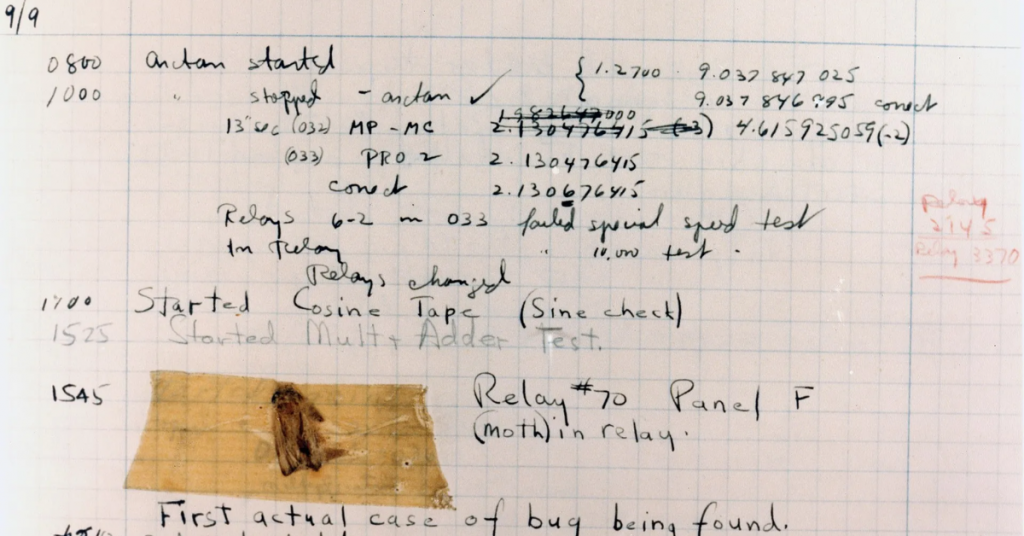Friday Fast Fact | The ‘Computer Bug’
Sept. 9th, 1947


In a time so strongly influenced by technology and computing power, computer and software bugs are by no means an uncommon occurrence. At their smallest, they can be annoying or disruptive to productivity. In some cases, the existence of a bug in software can lead to catastrophic outcomes.
Take, for instance, the infamous Y2K Bug. As the year 2000 loomed closer, there was a pervasive fear that computing systems were not equipped to handle years starting with “20”, instead of “19”. Though this panic was largely misplaced, it did create a push for upgraded systems and software, in anticipation of such bugs.
In another instance, a miscommunication about imperial/metric measurement in its coding and operation caused the Mars Climate Orbiter to be destroyed in space. It was coded for metric units, but operated using parameters in imperial units. This bug cost NASA nearly $200 million, factoring in research, development, and operation.
But did you know that the first recorded instance of a computer bug actually dates back to September 9th, 1947? In fact, this incident gave us the very name “bug” itself, when dealing with computer issues.
Interestingly, this historic computer bug wasn’t an error in code or programming, but an actual… bug! Quite literally, the first known computer bug in history was a moth that made its way into Harvard’s Mark II Computer on Sept. 9th, 1947. After removing the moth from the computer, the operators actually attached it to the logbook from that day’s work. (In fact, this very instance is where the phrase “debugging” comes from as well.)
Though Thomas Edison noted “bugs” in inventions of his own and was the first known user of the phrase, our understanding of it in the context of computers and programming comes from a seemingly innocuous incident 75 years ago.
As the OOH industry continues to evolve, and the systems and processes we rely on become increasingly complex, rooting out bugs can become an even more difficult task. Next time you’re dealing with some bugs in your computer or software, give a thorough check – maybe it’s a moth!

